How to Wire Lighting Circuits in the UK: A Comprehensive Guide to the Two Plate, Three Plate, and Conversion Methods
Learn the essential methods for wiring lighting circuits in the UK, including the Two Plate, Three Plate, and Conversion Methods. This comprehensive guide covers step-by-step instructions, pros and cons, and common use cases, ensuring safe and efficient electrical installations for domestic and commercial settings.
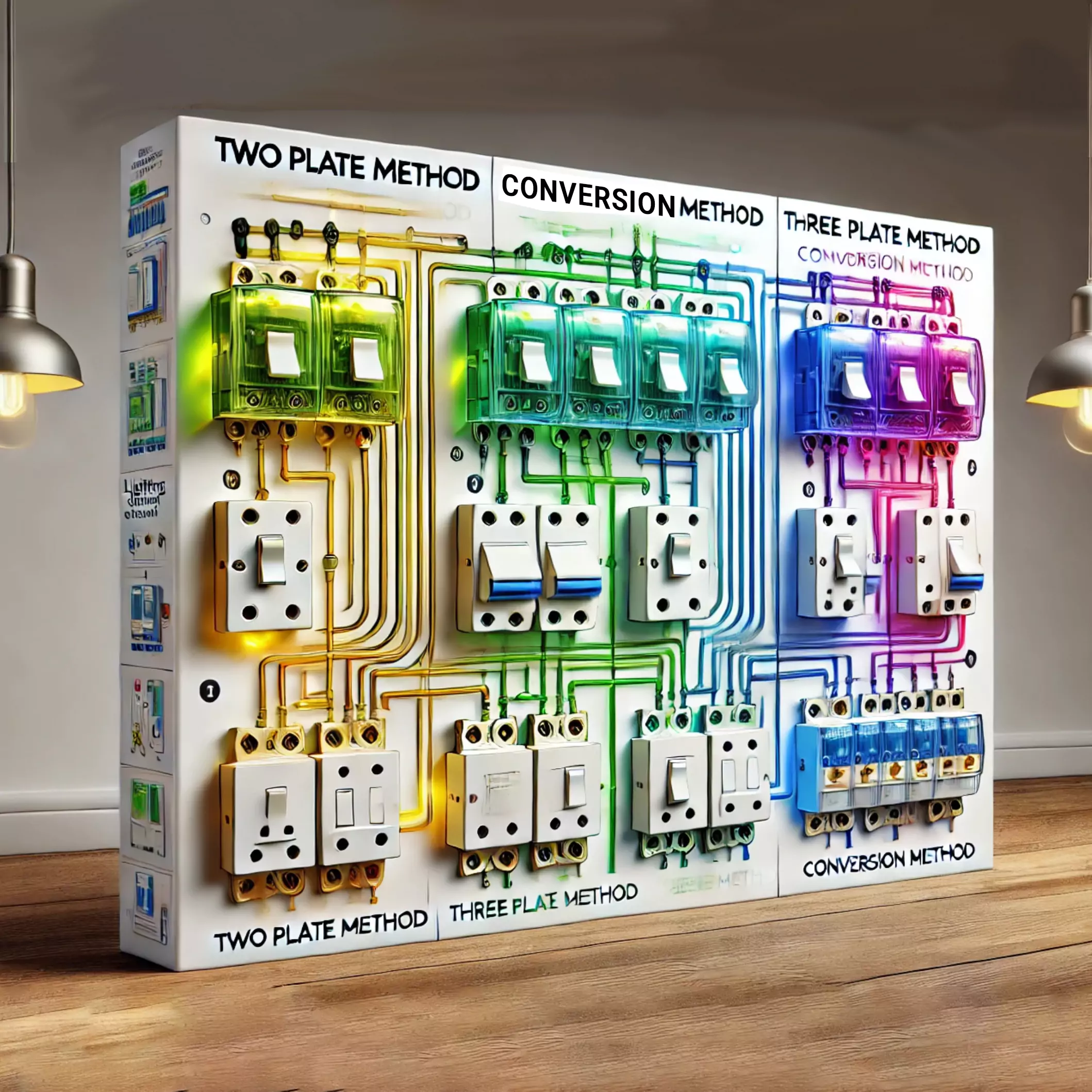
OW London Electrician and Home Automation Engineers Team
How to Wire Lighting Circuits: A Simple Guide for the UK
In this guide, we will walk you through the most common methods used in the UK to wire lighting circuits. We will focus on three main categories and explain each with detailed steps. Let’s dive into the details!
Categories of Lighting Circuit Wiring
- Two Plate Method
- Three Plate Method
- Conversion Method
These categories correspond to different ways of wiring lighting circuits depending on the type of switching and the number of lamps involved.
1. Two Plate Method
This is one of the simplest and most common methods used in the UK. It is typically found in older properties and in situations where simplicity is key.
Pros and Cons
- Pros:
- Simple and straightforward, making it easier for quick installations.
- Requires fewer cables, which can reduce cost.
- Ideal for simple lighting circuits where only basic switching is needed.
- Cons:
- Less flexible compared to three plate wiring.
- Not suitable for complex lighting setups with multiple switches.
- Common Use Cases: Often found in older homes or in commercial installations where single-core cables are used.
Image: Two Plate Method
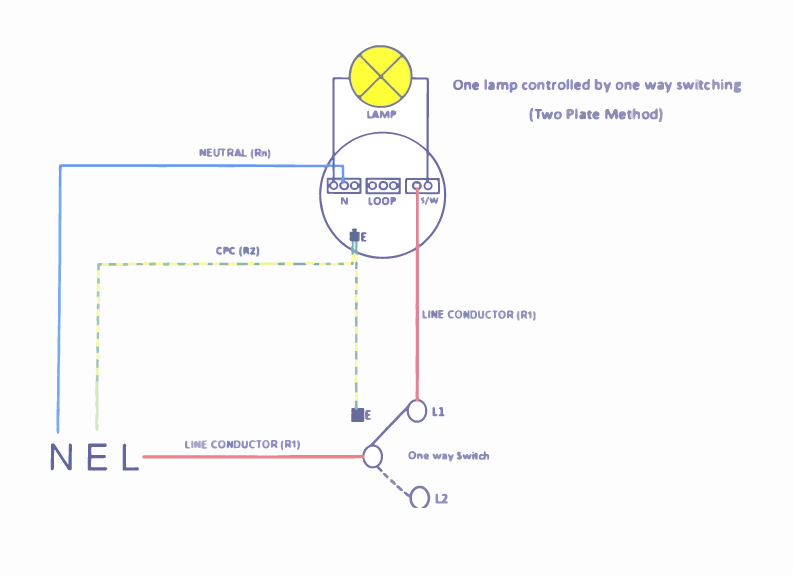
- Explanation: In this method, the circuit is wired with just two conductors, typically live and neutral. This method is often used in simple, single-light installations.
Image: Two Plate Method - Two Way Switching
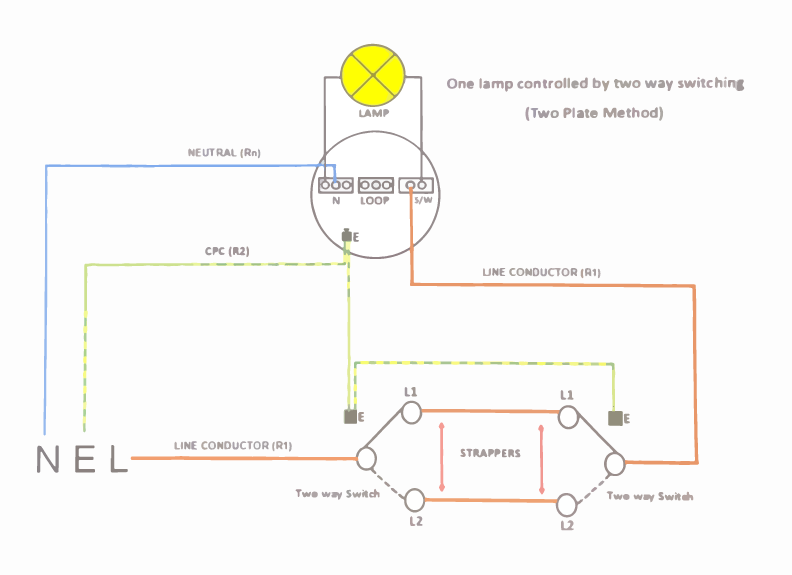
- Explanation: This variant is used when you need to control the lamp from two different locations, commonly used in hallways or staircases.
Image: Two Plate Method - Two Way and Intermediate Switching
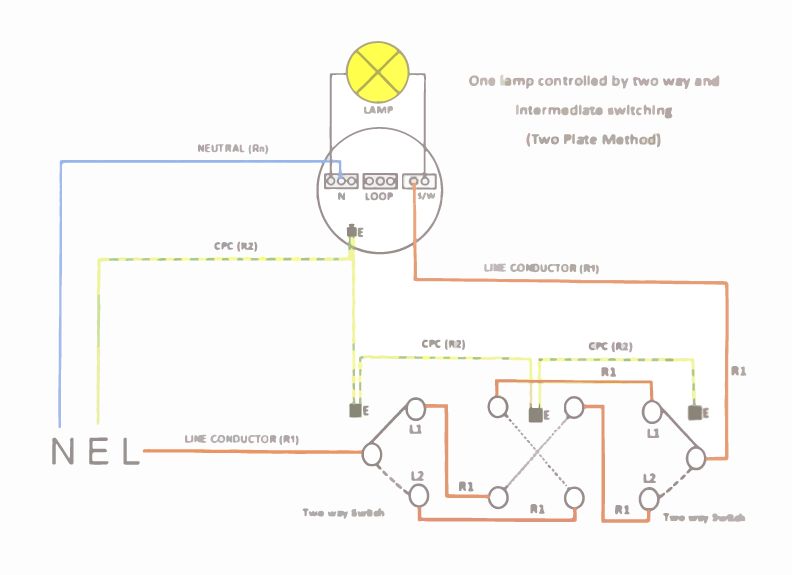
- Explanation: This is used when you need control from more than two locations, such as larger rooms or long corridors.
2. Three Plate Method
This method is slightly more complex but allows for more flexibility. It’s the most commonly used method in modern domestic installations.
Pros and Cons
- Pros:
- Provides more flexibility, especially for future additions or modifications.
- Supports loop-in systems, making it easier to add extra light points.
- Ideal for domestic settings where multiple lighting circuits might be required.
- Cons:
- Slightly more complex and requires more wiring than the two plate method.
- Can be overkill for very simple installations.
- Common Use Cases: Common in new build homes and modern renovations, where flexibility and future-proofing are important.
Image: Three Plate Method - One Way Switching
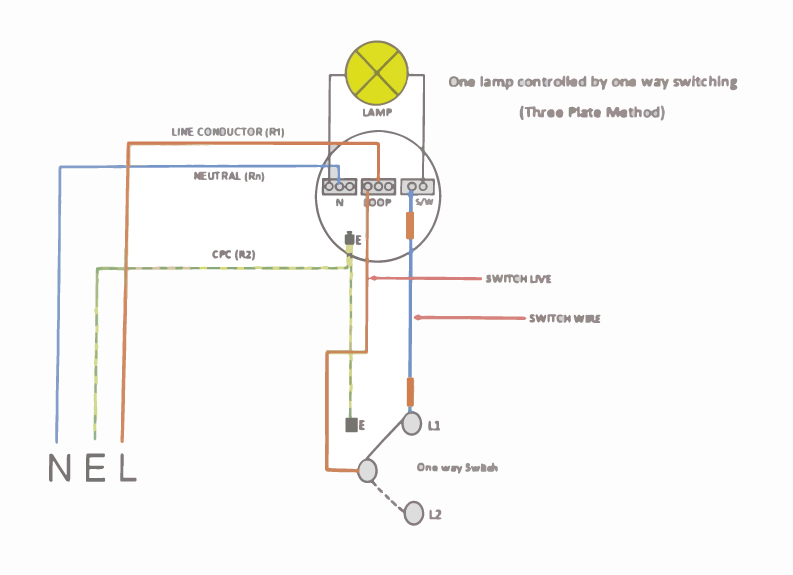
- Explanation: The three plate method uses an additional conductor, allowing for a loop-in system. This is ideal for multiple light points controlled by a single switch.
Image: Three Plate Method - Two Way Switching
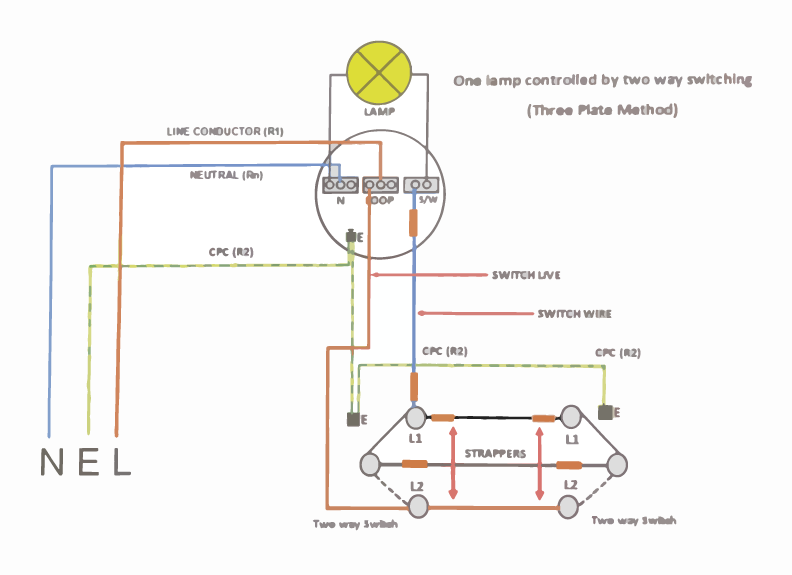
- Explanation: This setup allows for two-way switching with the added flexibility of a loop-in at any point.
Image: Three Plate Method - Two Way and Intermediate Switching
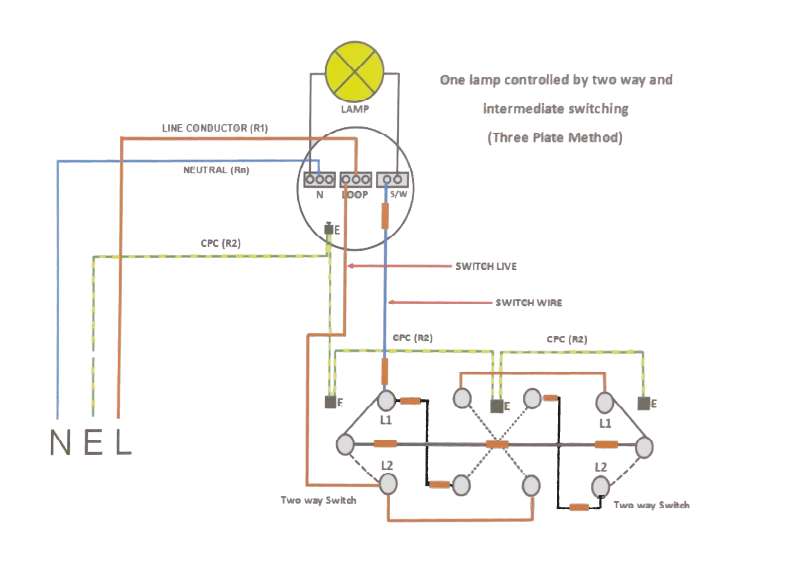
- Explanation: The three plate method with intermediate switching is perfect for complex lighting setups, providing control from multiple locations.
3. Conversion Method
This method is used when upgrading or converting existing wiring systems, often encountered in renovation projects.
Pros and Cons
- Pros:
- Useful for modernizing older electrical systems.
- Can adapt existing wiring to support modern appliances and fixtures.
- Provides a cost-effective solution without needing a complete rewire.
- Cons:
- May require compromises due to the limitations of existing wiring.
- Not always as efficient or flexible as new wiring methods.
- Common Use Cases: Often used in older properties undergoing renovation or in situations where the existing wiring needs to be upgraded without a complete overhaul.
Image: Conversion Method - One Way Switching
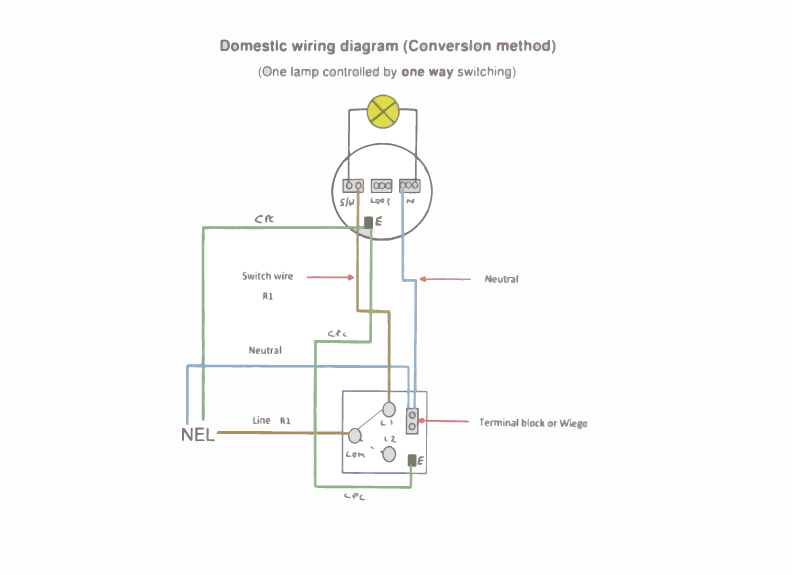
- Explanation: This is typically used when converting older wiring systems to a more modern standard, often involving a single switch.
Image: Conversion Method - Two Way Switching
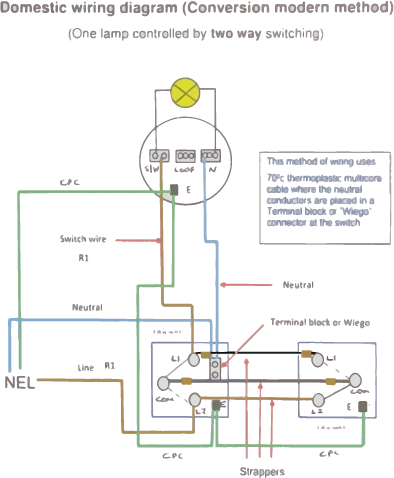
- Explanation: A conversion with two-way switching is useful when modernizing hallways or staircases.
Image: Conversion Method - Two Lamps Controlled by Individual Switching
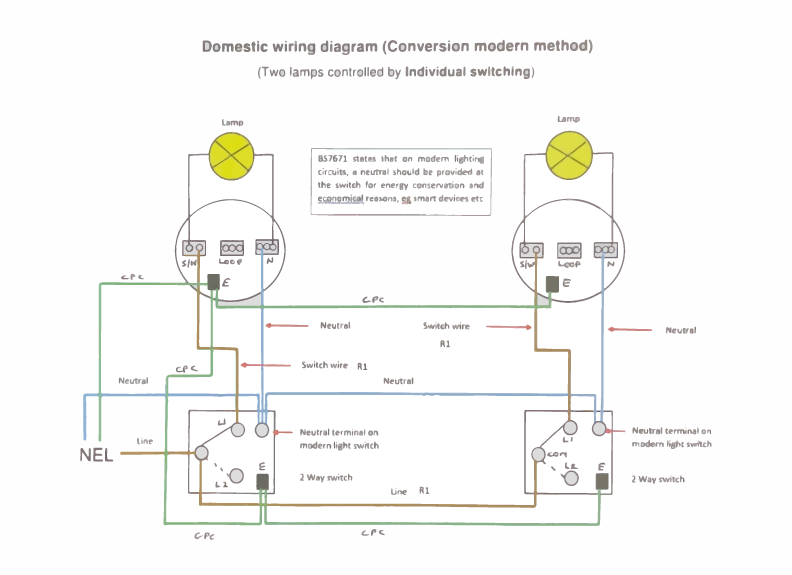
- Explanation: This setup allows for individual control of two lamps, making it ideal for larger spaces where different lighting configurations are required.
Conclusion
By understanding these three categories and their respective methods, you can choose the best approach for your lighting circuit needs. Whether you are working on a new installation or upgrading an existing one, this guide should provide you with the clarity needed to proceed confidently.
What users Saying
Discover what our customers think about our services. Their feedback reflects our commitment to delivering exceptional service and expert solutions for all electrical and security needs.

